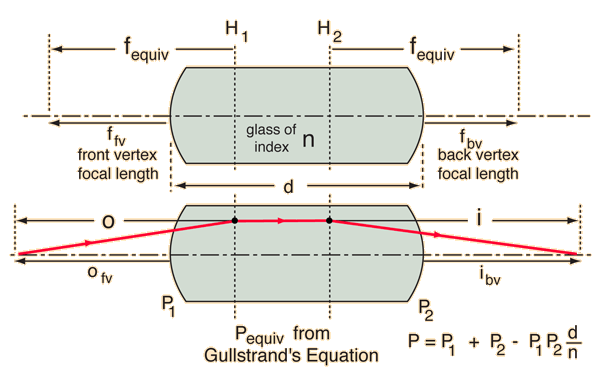Image from Principal Planes
The thin lens equation can be used with thick lenses if the principal planes are found. The equivalent focal length of the thick lens can be found from Gullstrand's equation, and the front and back vertex focal lengths obtained. Once that is done, the principal planes can be located by subtracting the vertex focal lengths from the equivalent focal length. The equivalent focal length and the distance from first principal distance H1 to the object can be used to calculate the image distance from the second principal plane H2. From that distance, the image distance from the back vertex can be deduced.

Note that the calculation below does not take into account the change in lens thickness with the angle of the incoming ray. It is typical to do the calculation only for the paraxial rays where the departure from full thickness is negligible. The segments in boxes below are the limiting cases where the lens thickness is taken as zero (thin lens approximation).
| Compare to same calculation by: | Vergence tracing |
| Principal planes, two thin lenses | Vergence Example | Matrix definitions |
Lens concepts
Thick lens concepts
Reference
Meyer-Arendt
| HyperPhysics***** Light and Vision | R Nave |